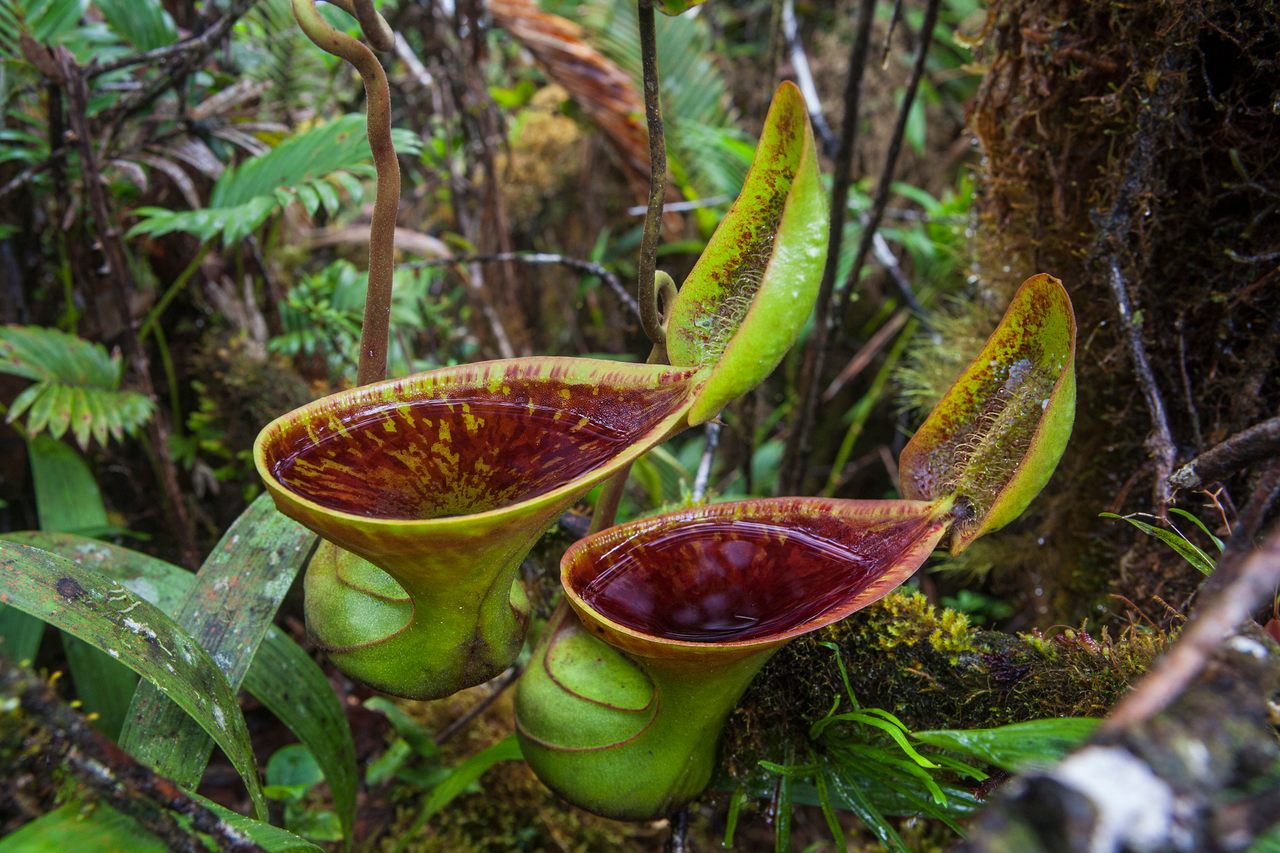Some of Borneo’s pitcher plants took insects off the menu in favor of mammal droppings. It’s an evolutionary triumph.
LOOK, CARNIVOROUS PLANTS HAVE IT rough. Sure, they have a big fan base, including some of the heaviest hitters in the world of science. Charles Darwin, for example, was so obsessed with the innocuous-looking sundew Drosera that, in an 1860 letter to Charles Lyell, he declared, “I care more about Drosera than the origin of all the species in the world.” A few other species—real, imagined, or somewhere in between—have made it big in Hollywood and Broadway, from the grinning Venus flytrap–ish Audrey in various iterations of Little Shop of Horrors to the terrifying vines in The Ruins.

Carnivorous plants fascinate because they defy our idea of what a plant should be, by flipping the food chain on its head, as consuming organisms rather than the consumed.
But the truth is that these flesh-eaters evolved to nosh on insects and the occasional vertebrate in places around the world where more typical plant fare, such as nutrient-rich soil, is not reliably on the menu. There’s nothing sinister about carnivorous plants. In fact, they’re marvels of resiliency that have adapted to some of the least-hospitable environments on the planet, from the various midge-munching butterworts of England’s fens to the enormous Attenborough’s pitcher plant (Nepenthes attenboroughii), which stands nearly five feet all and has been known to down a rodent or two in the cloud forest of Palawan, an island in the Philippines. (By the way, the plant’s namesake, naturalist Sir David Attenborough, like Darwin, is also a fan of carnivorous plants.)
Most of the 160 or so species of pitcher plants have leaves that have evolved to hold a viscous digestive fluid. Prey attracted by nectar slip in, get trapped, drown, and, eventually, are broken down and absorbed through the leaf walls. A handful of pitcher plant species have taken their opportunistic eating one step further. In a recent paper published in Annals of Botany, a team of botanists detail how some Nepenthes species have evolved to get their nutrients not from the animals themselves but the animals’ waste—specifically, the nitrogen-rich droppings of mammals. While perhaps not the most palatable of processes, in resource-poor ecosystems, it is nothing short of ingenious.

N. lowii, for example, is found only in the mountaintop cloud forests of Borneo, at elevations of about 5,500 to 8,500 feet above sea level. This climbing pitcher plant’s stems can reach lengths of more than 30 feet, with individual pitchers about four inches across. The pitchers are noteworthy for their shape, which is strongly reminiscent of a toilet bowl, complete with lid (part of the leaf that can help keep heavy rain out).
In fact, researchers have long known that mountain tree shrews, attracted to N. lowii’s tasty secretions, frequently defecate directly into the pitcher—an activity that has earned the plant some unfortunate nicknames. But N. lowii has nothing to be ashamed about: The authors of the new paper found that the potty plant’s tissues have significantly higher concentrations of nutritious nitrogen than pitcher plants that consume insects.
In fact, at least half a dozen Nepenthes species distributed across Borneo’s mountains have adapted to coprophagy not just to survive but to thrive. In these higher-elevation ecosystems, where low-nutrient soils are common and insects are rare, the plants have become highly efficient at capturing the nitrogen in droppings from shrews, bats, and rodents. Some of the poop-eating plants studied stored more than twice as much high-quality nitrogen as their insectivorous cousins.
So snicker if you like, but N. lowii and its fellow pitcher potties have found their Happy Meal. Or, perhaps, Crappy Meal.






